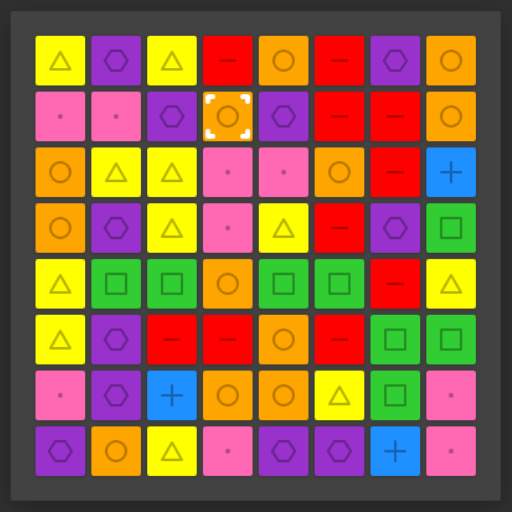Chess
Played 53 times.
- % (0/0)
Description
Instructions
Categories Comments

Chess is a classic two-player strategy board game played on an 8x8 grid. Each player controls 16 pieces: one king, one queen, two rooks, two knights, two bishops, and eight pawns. The objective is to checkmate the opponent's king, meaning it cannot escape capture. Players take turns moving their pieces according to specific rules, with each piece having its own movement pattern. Chess combines deep strategy, tactics, and planning, making it a timeless and challenging game for all ages.
Instructions
Here are the basic instructions for playing Chess:
Setup:
Place the board so that each player has a white square at the bottom-right corner.
Arrange the pieces as follows:
Back row (from left to right): Rook, Knight, Bishop, Queen, King, Bishop, Knight, Rook.
Front row: Place all 8 pawns in a row in front of your other pieces.
White moves first, and players take turns.
Objective: The goal is to checkmate your opponent's king, meaning it is under attack and cannot escape capture.
How Pieces Move:
Pawns: Move forward one square, but capture diagonally. On their first move, pawns can move forward two squares.
Rooks: Move horizontally or vertically any number of squares.
Knights: Move in an "L" shape: two squares in one direction and then one square perpendicular. Knights can jump over other pieces.
Bishops: Move diagonally any number of squares.
Queens: Move any number of squares in any direction (horizontal, vertical, or diagonal).
Kings: Move one square in any direction.
Special Moves:
Castling: The king moves two squares towards a rook, and the rook jumps over the king to the square next to it. This move can only be done if neither piece has moved before and there are no pieces between them.
En passant: If a pawn moves two squares forward from its starting position and lands next to an opponent's pawn, that pawn can capture it as if it had only moved one square.
Pawn Promotion: When a pawn reaches the opponent's back rank, it can be promoted to any other piece (except a king), typically a queen.
Winning the Game:
Check: If a king is under direct attack, it's in "check." The player must make a move to remove the check.
Checkmate: If a player's king is in check and there is no legal move to escape, it’s checkmate, and the game ends with that player's loss.
Stalemate: If a player cannot make a legal move but their king is not in check, it’s a draw.
Draw: A game can end in a draw if no checkmate is possible, or if both players agree to a draw.
Enjoy playing and developing your strategies!
Setup:
Place the board so that each player has a white square at the bottom-right corner.
Arrange the pieces as follows:
Back row (from left to right): Rook, Knight, Bishop, Queen, King, Bishop, Knight, Rook.
Front row: Place all 8 pawns in a row in front of your other pieces.
White moves first, and players take turns.
Objective: The goal is to checkmate your opponent's king, meaning it is under attack and cannot escape capture.
How Pieces Move:
Pawns: Move forward one square, but capture diagonally. On their first move, pawns can move forward two squares.
Rooks: Move horizontally or vertically any number of squares.
Knights: Move in an "L" shape: two squares in one direction and then one square perpendicular. Knights can jump over other pieces.
Bishops: Move diagonally any number of squares.
Queens: Move any number of squares in any direction (horizontal, vertical, or diagonal).
Kings: Move one square in any direction.
Special Moves:
Castling: The king moves two squares towards a rook, and the rook jumps over the king to the square next to it. This move can only be done if neither piece has moved before and there are no pieces between them.
En passant: If a pawn moves two squares forward from its starting position and lands next to an opponent's pawn, that pawn can capture it as if it had only moved one square.
Pawn Promotion: When a pawn reaches the opponent's back rank, it can be promoted to any other piece (except a king), typically a queen.
Winning the Game:
Check: If a king is under direct attack, it's in "check." The player must make a move to remove the check.
Checkmate: If a player's king is in check and there is no legal move to escape, it’s checkmate, and the game ends with that player's loss.
Stalemate: If a player cannot make a legal move but their king is not in check, it’s a draw.
Draw: A game can end in a draw if no checkmate is possible, or if both players agree to a draw.
Enjoy playing and developing your strategies!
Categories Comments

You must log in to write a comment.





